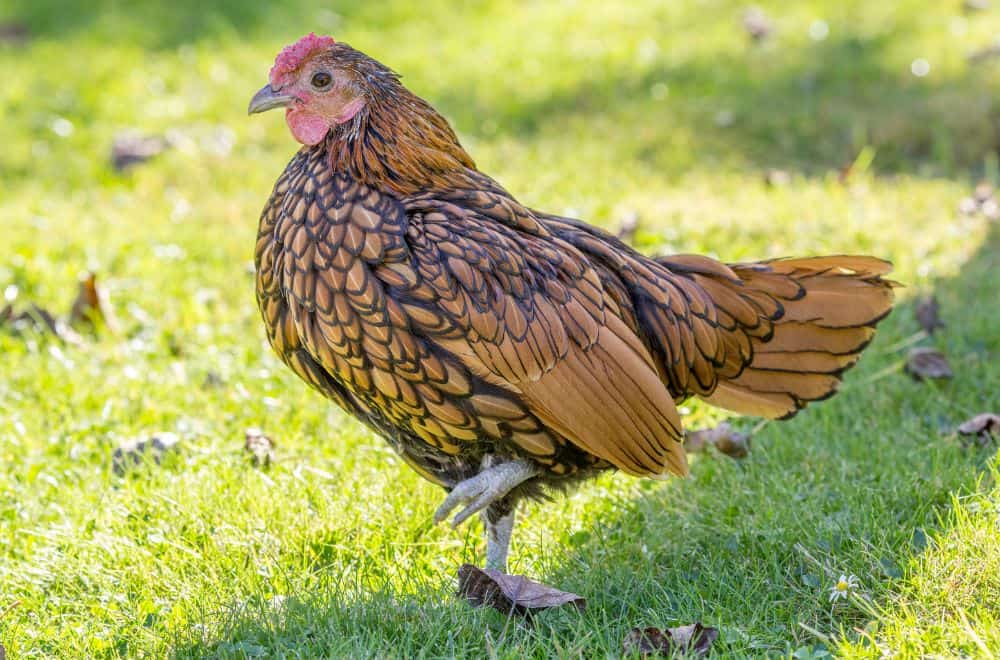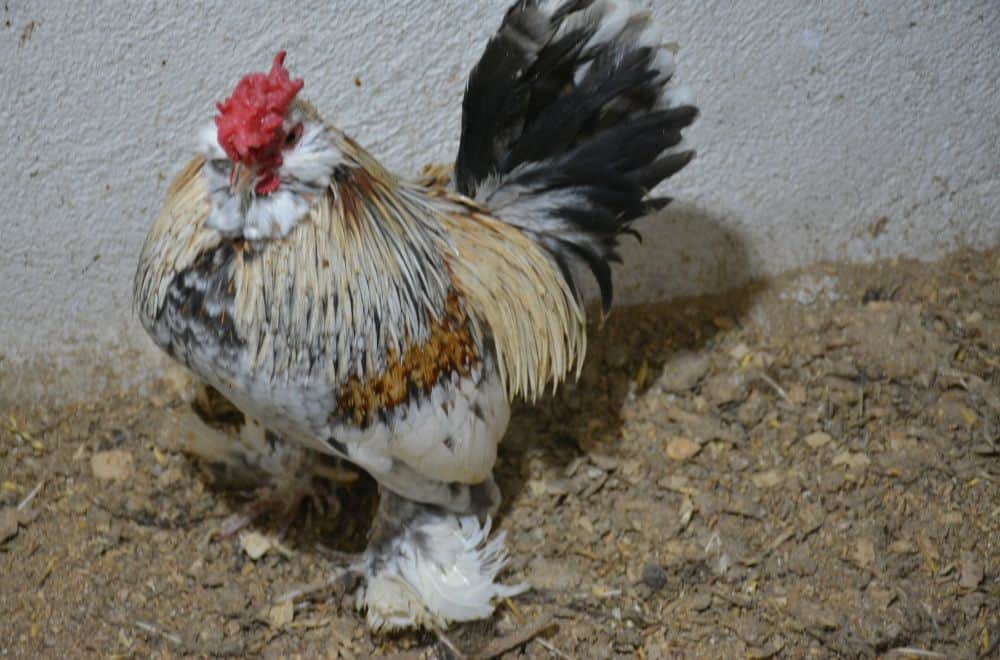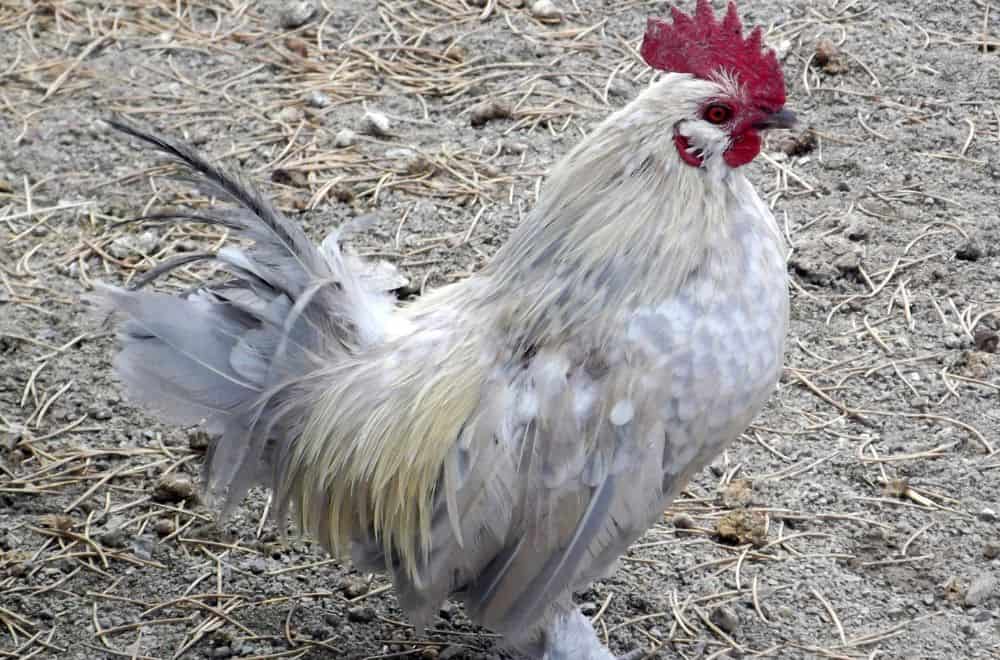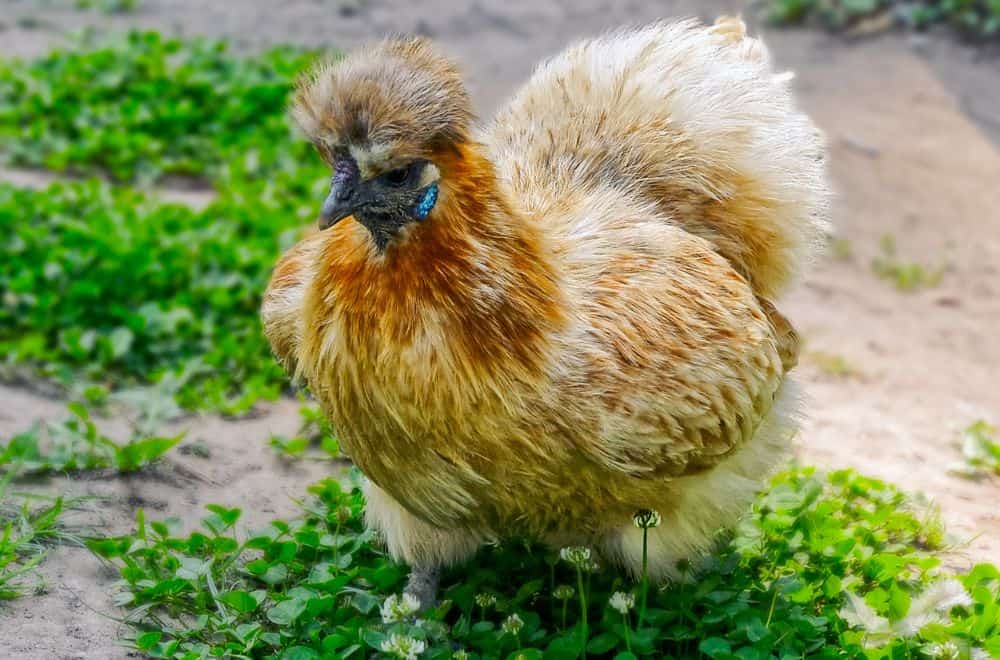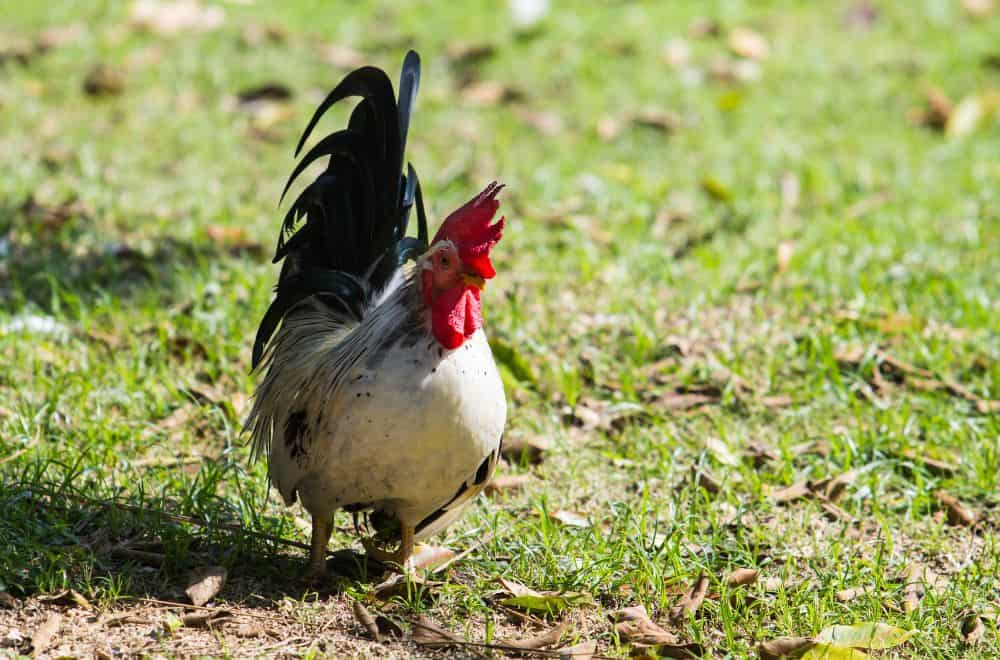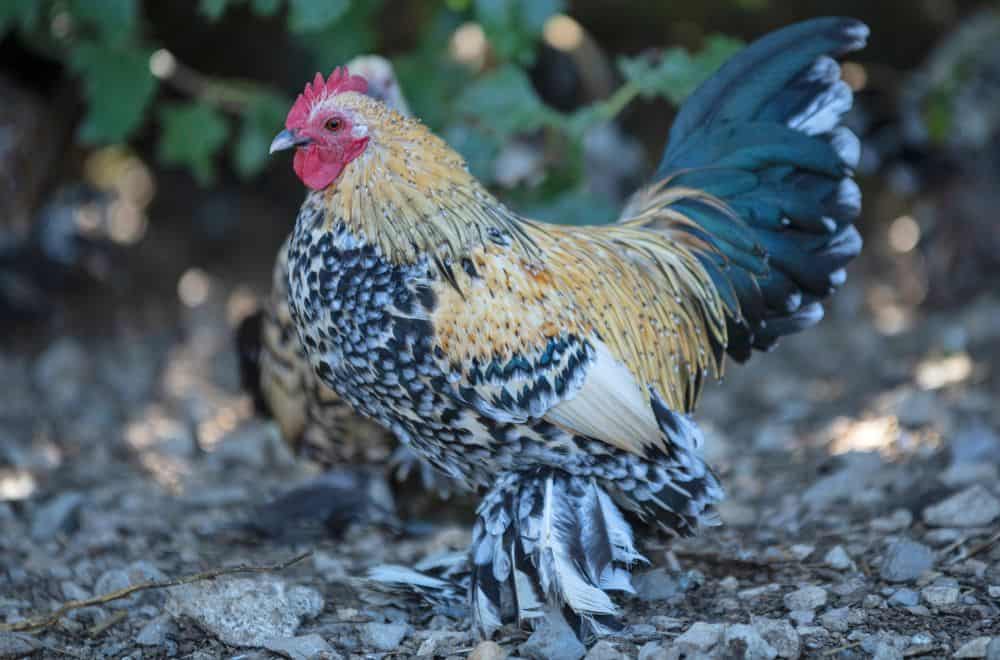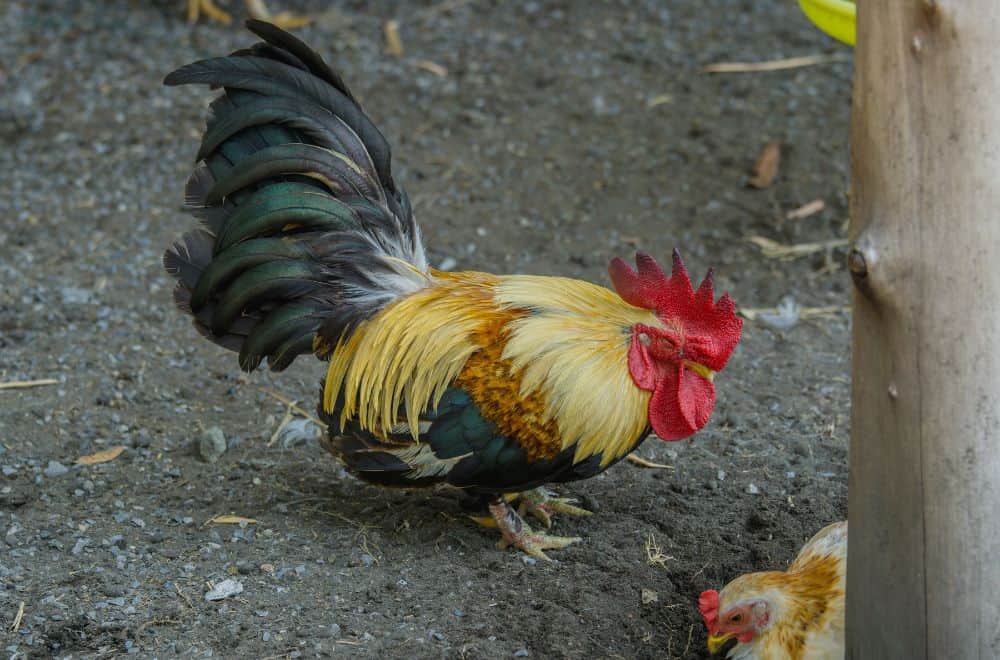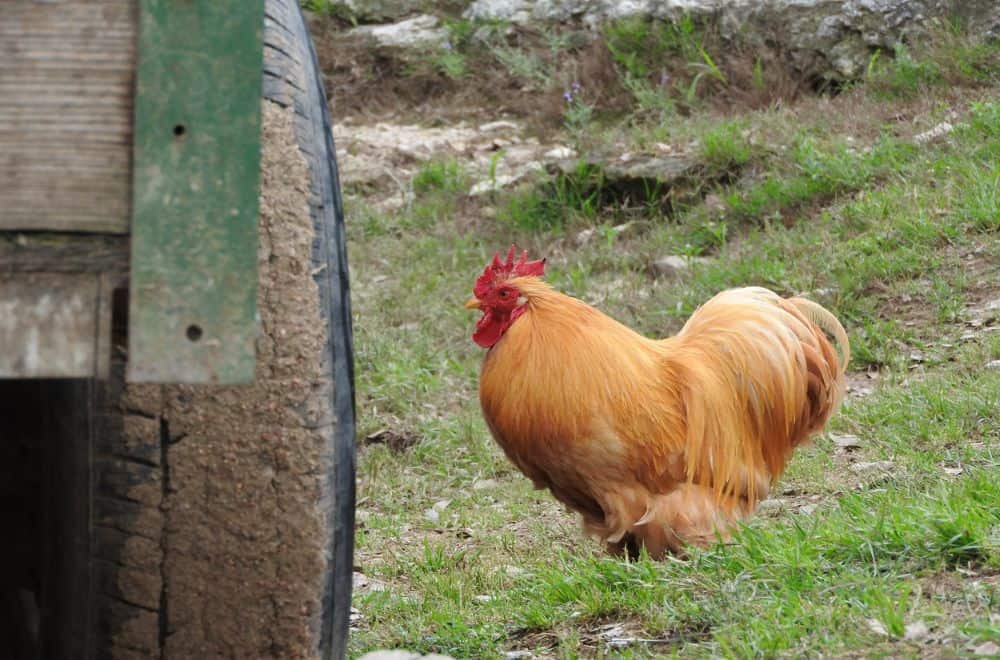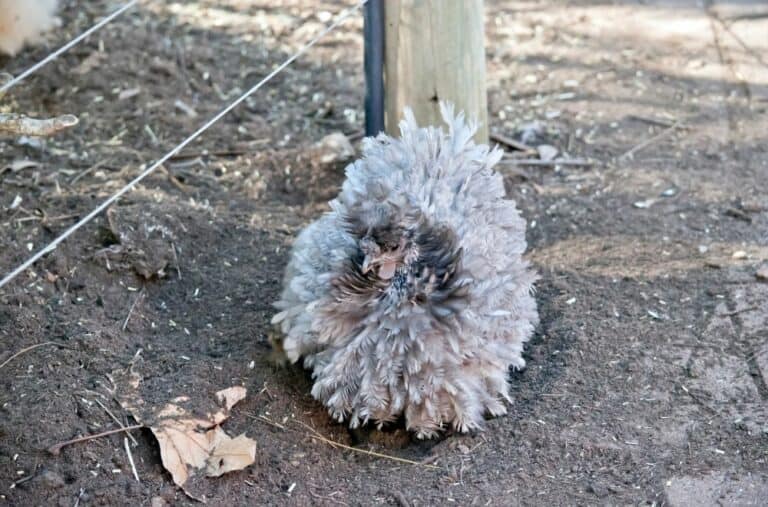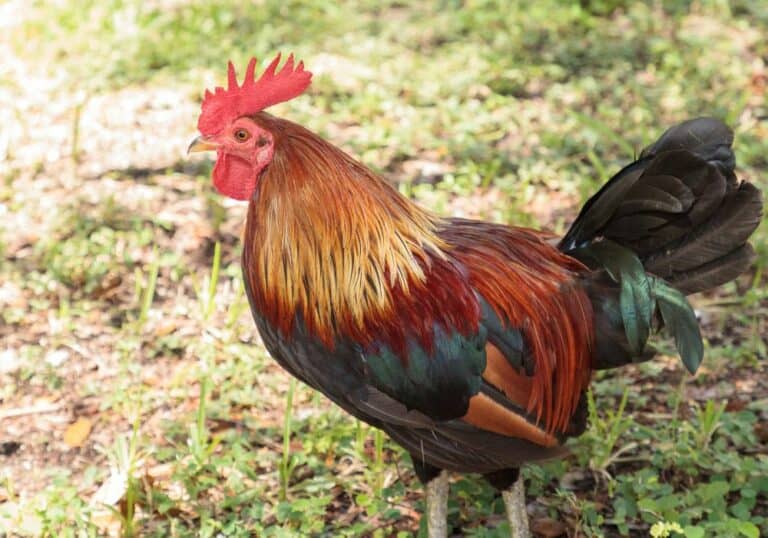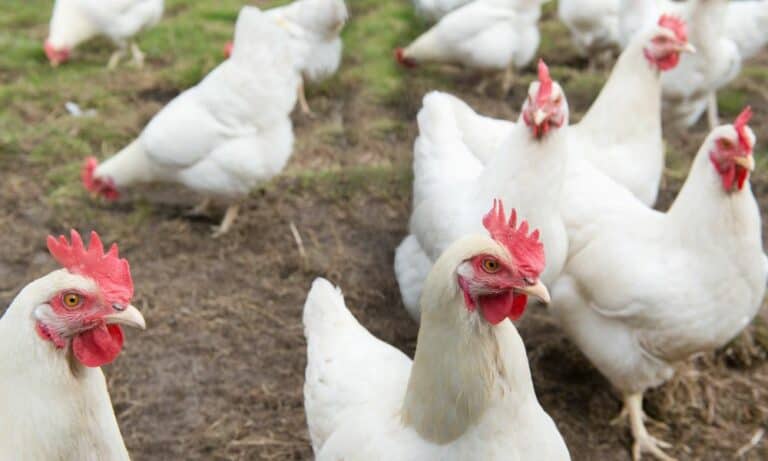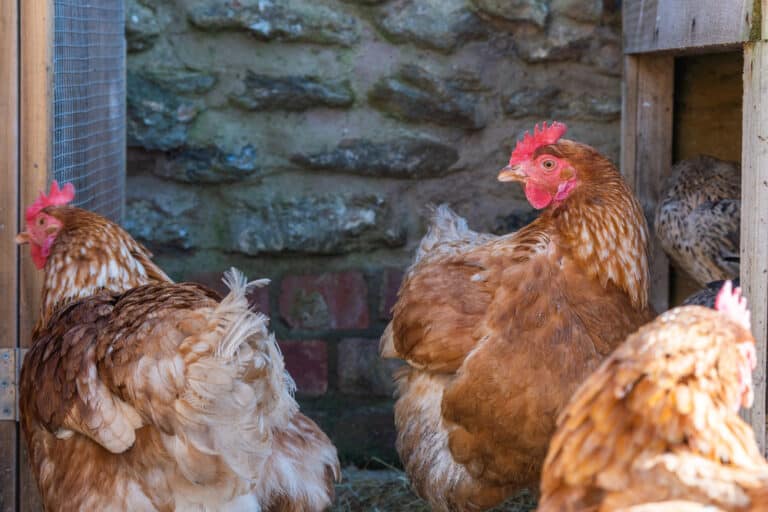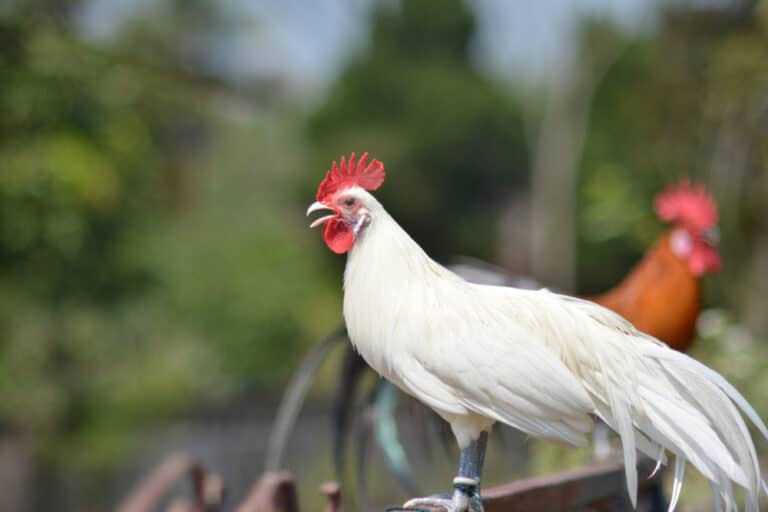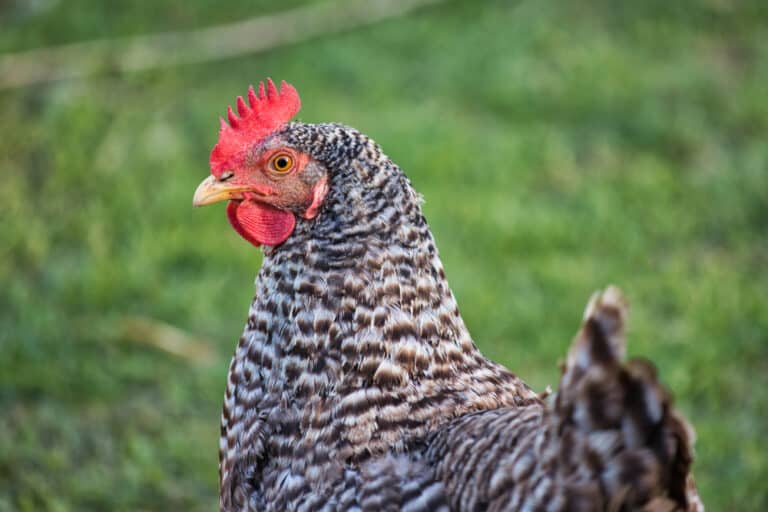Have you heard about bantam chickens and want to learn more? Then you’ve come to the right place!
We have everything you need to know about these compact chooks. We’ll explore what a bantam chicken is, and the different breeds and varieties that are out there. And we’ll look at what to consider if you’re thinking of keeping your own bantam chickens.
Ready to find out more? Step this way …
What is the difference between bantam and standard chickens?
If you’re new to keeping chickens, you might be wondering what a bantam chicken actually is. Well, it’s not a specific breed. Instead, the term refers to the size of the bird.
Bantam chickens are smaller than the regular kind. In some cases, they were bred as miniature versions of larger breeds. But other breeds – known as “true bantams” – are naturally small.
And the term “bantam” can be applied to any kind of fowl. So as well as bantam chickens, there are bantam ducks and bantam geese.
So just how small does a chicken need to be to be classified as a bantam? Well, there are no hard and fast rules here.
Having said that, bantams that are miniaturized versions of larger chickens tend to be between a fifth and a quarter of the size of the originals. Among the many breeds with bantam varieties are Cochins, Plymouth Rocks, Dominiques and Rhode Island Reds.
But sizes can vary significantly between different bantam breeds. The smallest adult bantams are just over a pound in weight, while the largest can be up to three pounds.
True bantam breeds
There are almost 30 different breeds of chicken that are classified as true bantams. And some others, like Silkies, are considered bantams in some countries but not elsewhere.
Let’s take a look at a few of the undisputed true bantam breeds.
1. Sebright
The Sebright is one of the oldest of all bantam breeds. It was the first ever breed to have its own club of enthusiasts. And today, the American Bantam Association lists Sebrights amongst the ten most popular breeds in the US.
They take their name from the man who developed the breed, Sir John Saunders Sebright. He was a contemporary of Charles Darwin, and Sebright’s work on selective breeding was cited in several of Darwin’s books.
It’s not difficult to see why the Sebright is so beloved. It’s small, beautifully proportioned, and has attractive laced feathers. The first Sebrights were gold with black lacing, but silver chickens were bred later. Males weigh around 22 ounces, while females are about 20 ounces.
One of the breed’s unusual features is the feathers of the cocks. In most breeds, male birds have sickle-shaped feathers in their tails, necks and saddles. But Sebright cocks have the same feathers as hens.
2. Barbu d’Uccle
The Barbu d’Uccle is a Belgian breed and is sometimes known as the Belgian d’Uccle. The “Uccle” in its name refers to the Belgian town where it originated in the early 1900s.
It was developed by a breeder named Michael van Gelder. Some believe that it was the result of breeding between other bantam breeds, namely the Sabelpoot and Barbu d’Anvers.
The first Barbu d’Uccles were porcelain and millefleur in color, but other varieties were soon developed. Today, Belgian breed registries recognise a range of no fewer than 28 colors, including black, white, cuckoo, lavender, quail and blue.
Cocks weigh around 26 ounces, hens and cockerels 22 ounces, and pullets 20 ounces. All Barbu d’Uccles are bearded, meaning they have a ruffle of feathers around their necks. Their legs are heavily feathered too.
Numbers of Barbu D’Uccles around the world are declining. Nevertheless, the breed continues to fare well in its native Belgium, where it’s the third most popular true bantam breed.
3. Dutch Bantam
Little is known about the origins of the Dutch bantam except that it was first developed in the Netherlands. It’s likely that its ancestors were chickens from southeast Asia.
Legend has it that Dutch bantams were kept by peasant farmers. This was allowed because their small eggs weren’t up to the standards of the gentry!
The first recorded reference to the breed comes in 1882. But it wasn’t until the 1950s that Dutch bantams were first exported to the US. And it was 1992 before the breed was first included in the American Standard of Perfection – the breed bible for American poultry fanciers.
These chickens are amongst the smallest of all true bantams. Males should weigh no more than 19 ounces, while females should be no more than 16 ounces.
They’re friendly birds, and good egg layers too. Hens will produce around 160 small eggs a year.
4. Japanese Bantam
The Japanese Bantam is also known as the Chabo. Its exact origins are shrouded in mystery, but it was developed in Japan from breeds of fighting birds.
It’s a distinctive bird, with very short legs and a tall, upright tail that stretches higher than its head. There are a number of different varieties too, including Silkie-feathered, hen-feathered, and frizzle-feathered. The latter have feathers that curl outwards from the chicken’s body.
Different color varieties are recognised in different countries. In western Europe, no fewer than 42 different colors are listed in breed registries. But in the USA, only nine are recognised: barred, black, black tailed buff, black tailed white, brown red, gray (birchen), mottled, wheaten and white.
Male birds weigh between 18 and 22 ounces, while females are between 14 and 18 ounces.
5. Booted Bantam
The Booted bantam is a European breed. It’s thought to be the result of breeding between Belgian, German, British and Dutch bantam chickens. By 1836, it had found its way to the US, where records show Booted bantams being bred in Massachusetts.
These chickens have compact bodies and well-developed legs with what are known as “vulture hocks”. These are long, stiff feathers on the upper thighs that point backwards. The birds’ legs and feet are heavily feathered too, hence the appearance of “boots”.
33 different color varieties are recognised in Europe and 14 in the UK. But the American Poultry Association lists just five: black, millefleur, porcelain, self-blue and white.
The Booted bantam is one of the larger true bantam breeds. Males can weigh up to 30 ounces, while the maximum weight for females is 23 ounces.
6. Rosecomb
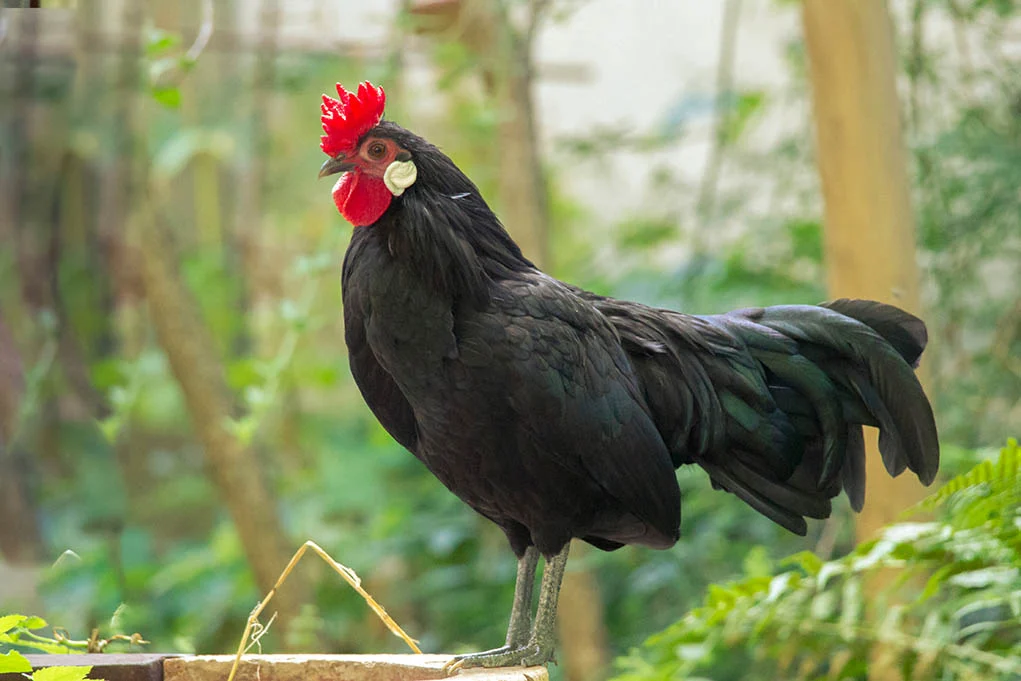
The Rosecomb is one of the most popular breeds of bantam chicken at poultry shows. It’s also one of the oldest breeds, with the earliest records of its existence dating back as far as the fourteenth century.
They even have a royal connection! The British king Richard III was one of the earliest Rosecomb enthusiasts. The breed was first admitted to the American Standard of Perfection in 1874.
The most distinctive of its characteristics is exactly what you’d expect from its name – a large, rose-colored comb. It also has white earlobes, a full tail, and a compact body. There are 25 different color variations, although white, black and blue chickens are seen most often.
Adult males weigh between 20 and 22 ounces, while adult females are between 16 and 18 ounces. While cocks may be aggressive, they’re generally friendly birds. And their small size means they’re good fliers too.
What are bantam chickens good for?
Bantam chickens can be a good choice for a smallholding, as their miniature size means they need less space than standard chickens.
They’re popular as show birds, and many breeds also make good pets for children. They generally have sweet temperaments. And what they lack in size, they more than make up for in personality!
Their smaller build also usually means they’re easier to prepare for showing. So they can be a great starting point for kids interested in competing in agricultural shows.
And although their eggs are smaller than those of regular chooks, they’re very tasty. They tend to have a higher yolk-to-white ratio than standard eggs too. In cooking, substitute three bantam eggs for every two eggs specified in the recipe.
Their eggs can vary in color, depending on the breed. You can find bantam eggs with shells that are white or cream, or more unusual colors like blue or green. Note, though, that like standard chickens, most bantams won’t lay eggs over the winter months.
Different breeds have different laying tendencies. Bantams that are miniature versions of standard chickens tend to lay slightly bigger eggs, and slightly more of them than true bantams. Many bantam breeds of all kinds, though, go broody often.
That’s great if you’re looking to increase your flock – and many bantams will happily incubate the eggs of less maternal breeds too. But it will decrease the number of eggs that are laid.
Caring for bantam chickens
While bantams need less space than full-sized chickens, they do still require adequate room in the coop and run. Each bantam chook needs a minimum of two square feet of space to themselves in the coop. In the run, they’ll need at least double that.
Their smaller size means that most breeds are good fliers too, and it’s important to make sure they can spread their wings. In addition to an enclosed run, give them areas to roam free. And set perches higher than you might for regular chickens.
It’s important to ensure the coop and run are well ventilated and have appropriate heating. These small birds can be more vulnerable to heat and cold than larger poultry.
And keep an eye on the coop and run for damage too. Little chooks can escape from small breaks in fencing, and they’re a bite-sized meal for predators.
When it comes to feed, bantams have a similar diet to their full-sized counterparts. They usually eat around a quarter of a pound of food per week. Make sure they have access to poultry pellets and fresh water at all times. Smaller pellets will be easier for them to eat.
If your bantam hens are laying lots of eggs, they might also need a calcium boost from time to time. Shell grit is great for this, and it’s also important for keeping your chickens’ digestive tracts healthy.
Whole grains, fresh fruit and vegetables are also great for chickens. Just make sure they’re washed before feeding to ensure they’re free of pesticides. Watermelon, bok choi, spinach, pumpkin, and strawberries are all packed with nutrients. And chickens love them too.
Just take care with feeding them scraps of human food. Bantams aren’t fussy eaters, but the wrong foods can be very harmful. Never feed them chocolate, coffee, citrus peel, or anything with lots of salt or sugar.
The average lifespan for a bantam chicken is between five and seven years. But care for them well, and individual birds may live for far longer.
Can you mix bantams with other chickens?
Some people advise against keeping bantams alongside standard chickens, arguing that their smaller size means they’re vulnerable to bullying. Others have successfully managed flocks containing both bantams and standard chickens.
There’s no doubt that mixing bantams with larger chooks does carry risks. And on no account should you add bantams to an established flock of standard chickens.
If you decide to mix bantams and larger birds in a new flock, it’s very important to keep an eye on them. Providing high perches for your bantams to escape conflict can be helpful. But if there are any signs of trouble, be ready to move your bantams straight away.
The safer option is to keep bantam flocks separate from larger fowl. That will allow the smaller birds to establish their own pecking order.
The beauty of bantam chickens
That brings us to the end of our look at bantam chickens! We hope you’ve enjoyed learning more about these friendly and beautiful birds.
There’s a huge variety of bantam breeds out there. So if you’re thinking of keeping your own bantams, narrow down your options and check out their characteristics and needs.
Make sure you’re able to provide the right environment, shelter, food and care for your feathered friends. Doing that will keep your chooks happy and healthy for years to come.

